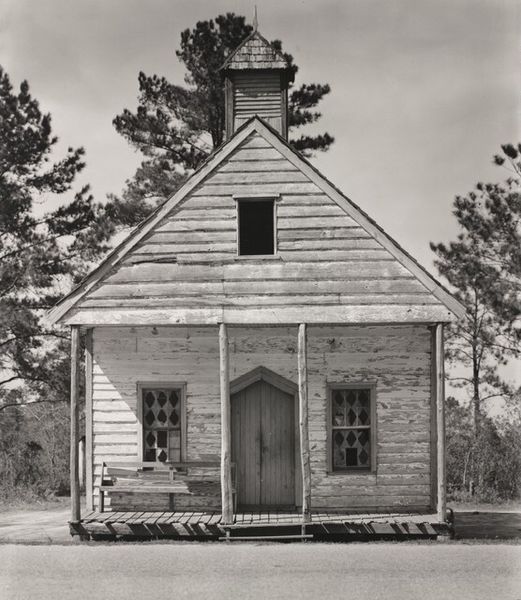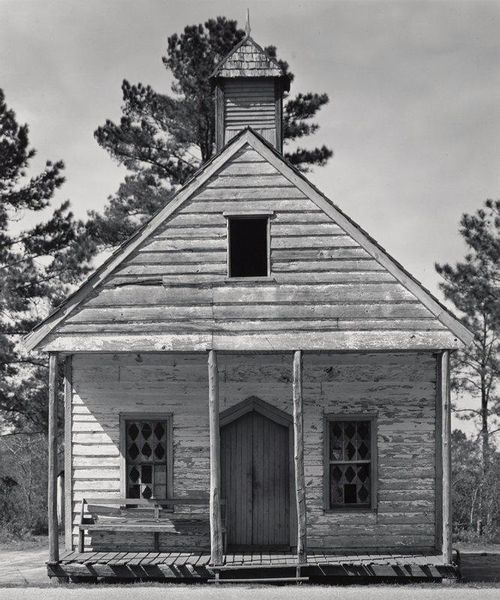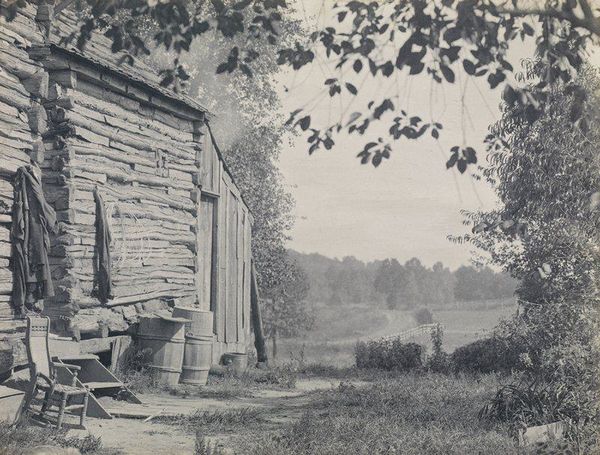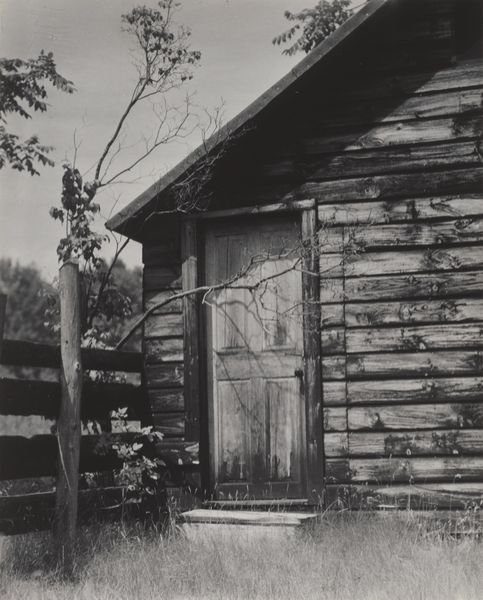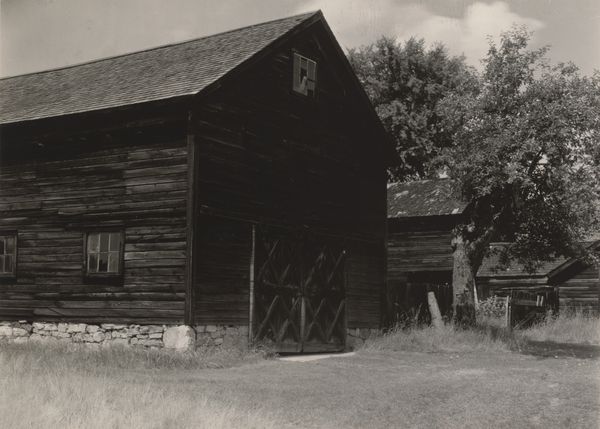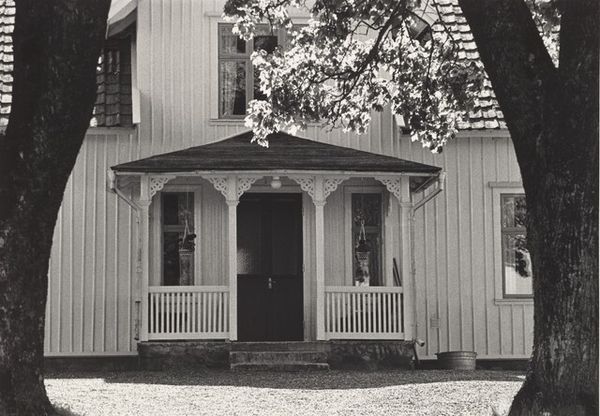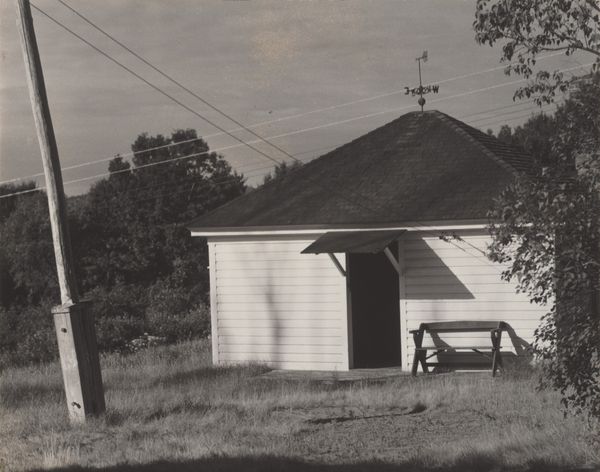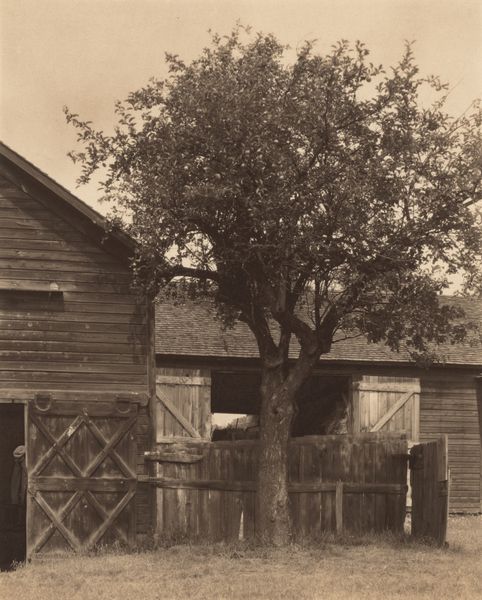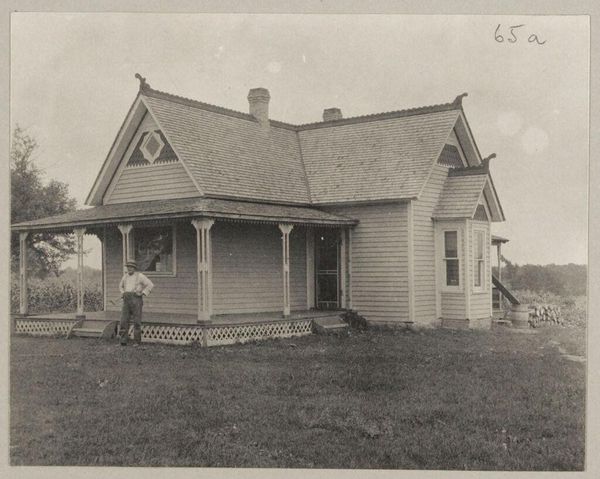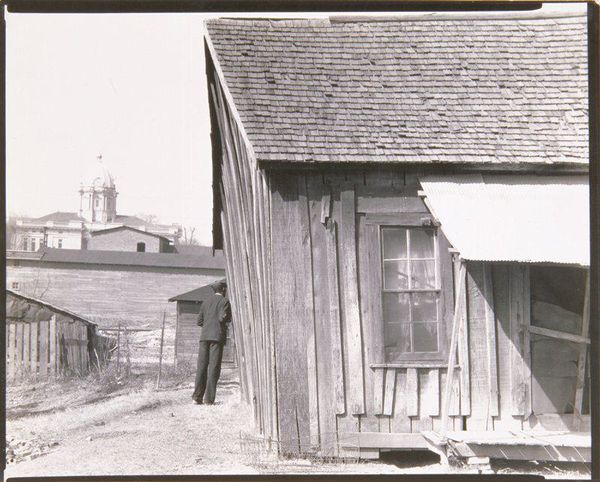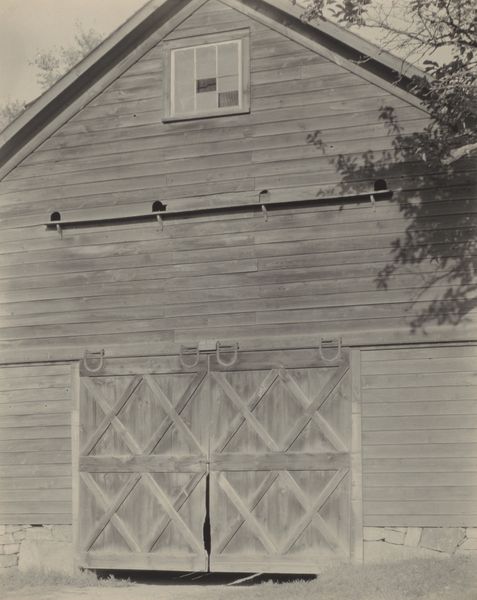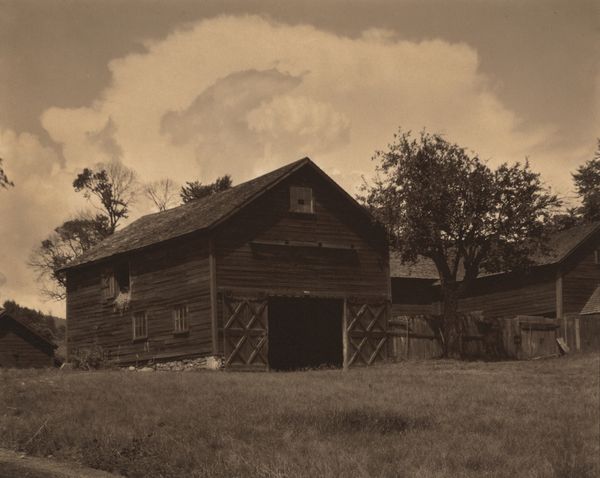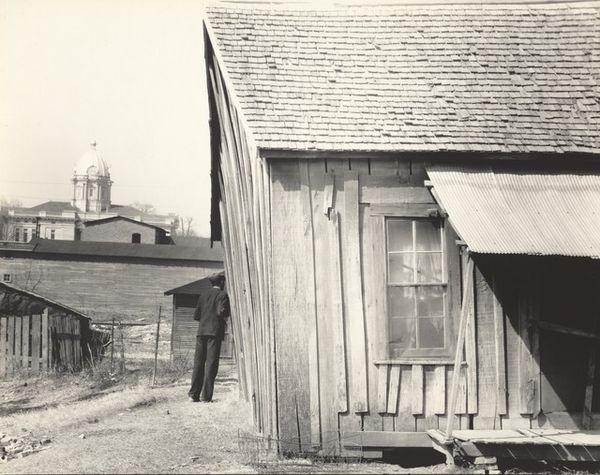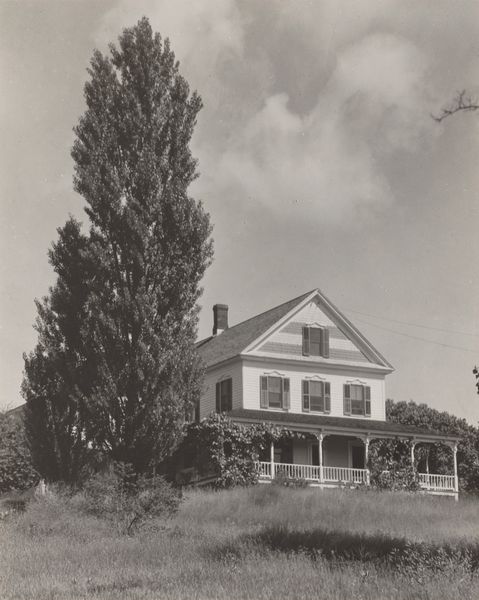
photography, architecture
#
landscape
#
photography
#
monochrome photography
#
united-states
#
architecture
#
realism
#
monochrome
Dimensions: 8 5/8 x 7 1/8 in. (21.91 x 18.1 cm) (image)8 3/4 x 7 1/4 in. (22.23 x 18.42 cm) (sheet)
Copyright: No Copyright - United States
Curator: This is Walker Evans' photograph, "Wooden Church," likely taken between 1936 and 1938. It’s currently held here at the Minneapolis Institute of Art. What are your initial thoughts? Editor: There's a somber stillness about it, isn't there? The monochrome palette enhances the weathered texture of the wood. It feels… austere. Curator: The materiality of the wood itself is crucial here. We're looking at the architecture of a simple, vernacular structure. Think about the labor involved in felling the trees, milling the lumber, and constructing this place of worship. The marks of human hands are everywhere. Editor: Absolutely, and I see this image as a powerful statement about the intersection of faith and the American South during the Depression. It speaks volumes about rural life and resilience, but also about the social and economic hardships endured by many communities, particularly African American communities. The church was and still remains an important part of social activism for communities affected by inequalities and prejudices. Curator: Precisely. Evans was acutely aware of these broader social and economic factors and documented the ordinary and working-class citizens. But there’s something more to be said about the artistry here, right? How would you position Evans' documentary approach to his work during the 1930’s? Editor: Well, Evans certainly aimed for objectivity, but we can’t ignore the power dynamics inherent in the act of photographing. There's always a lens, a point of view, that influences how we perceive the subject. Were there ethical considerations? I imagine it's important to think of Evans in relation to cultural representation in a specific era, but also to critically evaluate his motivations in capturing the rural landscape. Curator: And it’s his critical eye, as well as attention to craftsmanship, that speaks to me most. This piece is a remarkable artifact, testament to the enduring importance of physical spaces and materials. Editor: A sobering and thought-provoking look into America's past, but I appreciate Evans and this photograph especially more for its capacity to bring dialogue between art history and current discourses.
Comments
No comments
Be the first to comment and join the conversation on the ultimate creative platform.
